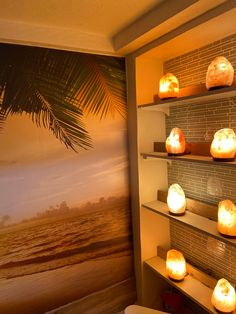Creating a Stress-Free Home Environment: Simple Design Tips
## Creating a Stress-Free Home Environment: Simple Design Tips
Your home should be a sanctuary—a place where you can relax, recharge, and escape the stresses of daily life. However, clutter, noise, and chaotic design can contribute to feelings of anxiety and overwhelm. By making intentional design choices, you can create a stress-free environment that promotes calmness and well-being. Here are some simple tips to help you design a more peaceful home.
### 1. Declutter Your Space
One of the most effective ways to create a stress-free environment is to declutter. A cluttered space can lead to feelings of chaos and distraction. Start by sorting through your belongings and categorizing them into three groups: keep, donate, or discard. Keep only the items that you love or use regularly. This process not only frees up physical space but also helps clear your mind, allowing for greater focus and tranquility in your home [1][2].
### 2. Incorporate Natural Elements
Bringing nature indoors can significantly enhance your home's calming atmosphere. Adding plants, flowers, or herbs not only improves air quality but also boosts your mood and reduces stress levels. Studies have shown that exposure to greenery can lower blood pressure and cortisol levels while enhancing cognitive performance [1]. Choose low-maintenance plants like succulents or snake plants if you're new to gardening.
### 3. Create Cozy Spaces
Designate specific areas in your home for relaxation and rejuvenation. Whether it’s a reading nook with comfortable seating or a meditation corner with soft cushions, having a cozy space allows you to escape from daily stresses. Use soft textiles, warm lighting, and calming colors to make these areas inviting [2].
### 4. Use Calming Colors
The colors in your home can greatly influence your mood and stress levels. Soft, neutral tones like blues, greens, and earth tones promote relaxation, while brighter colors may energize or overstimulate the senses. Consider painting walls in soothing shades or incorporating these colors through decor items like cushions or artwork [2].
### 5. Optimize Lighting
Natural light has a profound effect on mood and well-being. Maximize natural light by keeping windows unobstructed and using light curtains that allow sunlight to filter in. In the evening, opt for soft lighting with lamps instead of harsh overhead lights to create a warm ambiance conducive to relaxation [2].
### 6. Establish Boundaries for Workspaces
If you work from home, it's essential to create clear boundaries between work and relaxation spaces. Designate a specific area for work that is separate from your living areas. This separation helps you mentally transition from work mode to relaxation mode at the end of the day [1].
### 7. Personalize Your Space
Adding personal touches that reflect your personality can make your home feel more comforting and inviting. Display photos, artwork, or souvenirs that bring you joy and remind you of positive experiences. Personalizing your space fosters a sense of belonging and comfort [1].
### 8. Incorporate Soft Textures
Soft textures can enhance the comfort level of your home environment. Layer rugs, throw blankets, and cushions to create a cozy atmosphere that invites relaxation. Consider using natural materials like cotton or wool for added warmth [2].
### 9. Minimize Noise Pollution
Noise can be a significant source of stress in any environment. To combat this, consider soundproofing techniques such as adding rugs or curtains that absorb sound, using white noise machines, or incorporating calming music into your daily routine [2].
### 10. Create an Outdoor Oasis
If possible, utilize outdoor spaces as extensions of your home for relaxation. Create a small garden or patio area where you can unwind surrounded by nature. Incorporating elements like comfortable seating or water features can enhance tranquility [2].
### Conclusion
Creating a stress-free home environment is about making intentional design choices that promote peace and well-being. By decluttering, incorporating natural elements, optimizing lighting, personalizing your space, and minimizing noise pollution, you can transform your home into a serene sanctuary that nurtures both body and mind. Embrace these simple tips to cultivate an atmosphere where you can truly relax and recharge!
Citations:
[1] https://www.linkedin.com/advice/3/how-can-you-create-stress-free-home-environment-usbhc
[2] https://www.veranda.com/decorating-ideas/a1041/peaceful-decor/
[3] https://www.healthpartners.com/blog/manage-stress/
[4] https://psychcentral.com/lib/how-couples-can-help-each-other-de-stress-and-improve-their-relationship
[5] https://www.health.harvard.edu/staying-healthy/exercising-to-relax?e=mindmapmarketing%40gmail.com&j=27644003&jb=0&l=16278673_HTML&mid=148797&u=318411663
[6] https://www.tghclinic.com/post/the-impact-of-stress-on-relationships-and-how-to-strengthen-them
[7] https://www.hindustantimes.com/lifestyle/relationships/relationship-tips-effective-ways-to-reduce-relationship-stress-101663925051916.html
[8] https://www.webmd.com/diet/ss/slideshow-diet-for-stress-management


Comments
Post a Comment